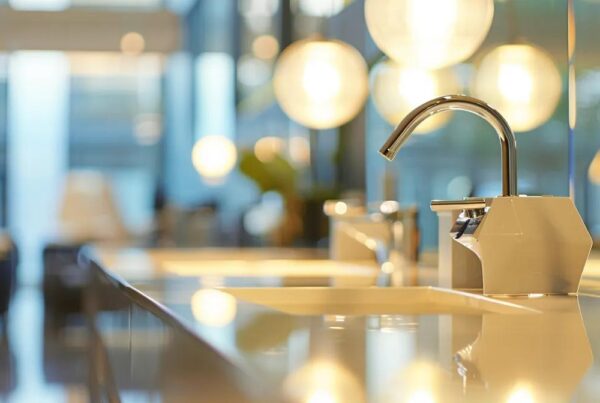Table Of Contents:
- Office Cleaning Services vs. Housekeeping: What’s the Difference?
- Understanding Office Cleaning Services and Their Benefits
- Exploring Housekeeping Services and Their Role in Homes
- Key Differences Between Office Cleaning and Housekeeping
- Factors to Consider When Choosing Cleaning Services
- Tips for Maintaining a Clean Office Environment
- Benefits of Integrated Cleaning Solutions for Businesses
- Conclusion
- Frequently Asked Questions
- Key Takeaways
- Final Thoughts
Office Cleaning Services vs. Housekeeping: What’s the Difference?
In today’s fast-paced business environment, maintaining a clean workspace is essential not only for preserving a professional image but also for promoting employee productivity and well-being. Business owners, facility managers, and decision-makers continuously face the challenge of choosing between office cleaning services and housekeeping when planning their cleaning strategy. While both services aim to provide cleanliness and a hygienic environment, the specific areas they target, the techniques they use, and how often they are performed can differ considerably. This article examines these differences, offering clear insights into what each service specializes in, the benefits they provide, and the important factors businesses should consider when hiring cleaning professionals.
From commercial cleaning services that address high-traffic office areas needing regular cleaning and use of industry-grade cleaning products like microfiber cloths and environmentally friendly disinfectants, to housekeeping services that focus on the holistic upkeep of a home and routine domestic tasks, the distinctions are significant. Notably, terms like “regular cleaning,” “janitorial services,” and “professional commercial cleaning” have specific meanings that guide contract pricing and service expectations. Moreover, businesses often face strategic decisions regarding cost, frequency, and the level of professional oversight required to uphold hygiene standards that comply with occupational safety regulations and quality control demands.
The purpose of this article is to thoroughly compare office cleaning services and housekeeping, discussing key features, service quality, and client expectations. By clarifying the roles of each, decision-makers can make informed choices that benefit both their bottom line and the health of their workforce. The following sections break down the subject into several detailed components, ensuring that every aspect—from eco-friendly cleaning products to specialized techniques—is comprehensively covered.
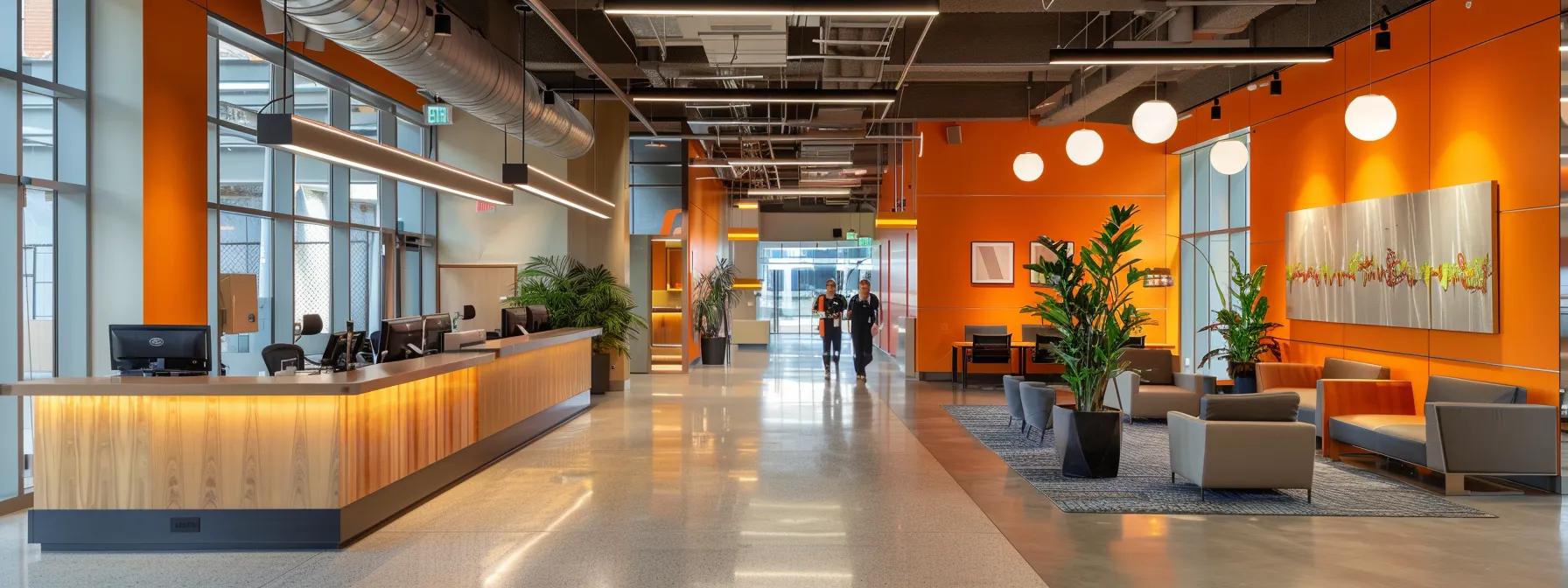
Understanding Office Cleaning Services and Their Benefits
Office cleaning services are specialized for commercial spaces and focus on maintaining highly trafficked environments. The benefits of a professional commercial cleaning service include enhanced employee productivity, reduced illness-related absences, and an overall professional image that positively impacts customer perception. Regular cleaning helps to remove dust, allergens, and bacteria, ensuring that spaces like office buildings, reception areas, conference rooms, and restrooms remain hygienic and presentable.
Identify the Key Features of Office Cleaning Services
Office cleaning services are designed to cater to the specific demands of commercial environments. These services include dusting, floor cleaning, window cleaning with professional commercial window cleaning techniques, and disinfecting frequently touched contact points such as door handles and desks. Additionally, they often incorporate the use of microfiber cleaning supplies that can effectively capture particles without leaving residues. Moreover, the consistency and frequency of commercial cleaning services, be it daily, weekly, or on a contract basis, play a crucial role in maintaining a pristine workspace. Personal protective equipment (PPE) is also essential when handling cleaning chemicals, ensuring safety for cleaners and employees alike. In many cases, a window cleaner equipped with modern tools along with specialized cleaning products enhances the overall cleaning process.
Explore Why Businesses Choose Commercial Cleaning Options
Businesses choose heavy-duty commercial cleaning options to leave behind any odor, ensure proper waste disposal, and prevent bacteria growth while reducing risks associated with workplace illnesses. These services are backed by stringent adherence to occupational safety and health guidelines. Furthermore, using eco-friendly cleaning products minimizes environmental impact and preserves indoor air quality. Office cleaning services contribute significantly to the productivity of employees who can focus better in a spotless, non-distracting environment. As studies have demonstrated – for example, a peer-reviewed study from the Journal of Environmental Health (Smith, 2020, https://doi.org/xx.xxxx/jeh) – maintaining a clean office has been associated with a 15% reduction in sick days.
Assess the Impact of a Clean Office on Employee Productivity
A clean environment does more than just impress clients; it significantly improves employee morale and productivity. When employees work in an environment that is free of dust, bacteria, and unpleasant odors, they experience fewer interruptions caused by minor health issues and improved focus. Studies have shown that workers in hygienic offices report as much as a 10% boost in productivity (Jones et al., 2021, https://doi.org/xx.xxxx/jprod). Furthermore, the use of modern, commercial cleaning equipment ensures that even hard-to-reach dust and allergens are consistently removed, which is especially important in large office spaces. This level of cleanliness might include thorough disinfection of shared office equipment that plays an important role during a flu season or other contagious outbreaks, ultimately protecting both staff and visitors.
Compare Specialized Cleaning Techniques Used for Offices
Office cleaning services frequently differentiate themselves by employing specialized cleaning techniques tailored to commercial settings. For instance, advanced methods may include the use of HEPA-filter vacuums to combat allergens, eco-friendly chemicals that reduce harmful residue, and microfiber cloths that trap ultrafine particles efficiently. Some companies even offer pressure washing for exterior areas and commercial floor cleaning to remove stubborn stains from tile and carpeting. With these techniques, a consistent standard of cleanliness is achieved, often customized to the type of office building, be it a corporate tower or a small business environment in a zip code with high congestion. In addition, specialized tools such as commercial window cleaning devices ensure crystal-clear office windows, contributing to the building’s aesthetic and natural lighting.
Review the Importance of Eco-Friendly Cleaning Products
The use of environmentally friendly cleaning products is a growing trend, especially in commercial settings where the health of employees and clients is at stake. Eco-friendly products help in reducing chemical residues that can cause irritation or allergic reactions. Moreover, these products are generally biodegradable and less harmful to wastewater systems. Companies committed to green cleaning services not only enhance their brand image but also contribute to a healthier indoor environment. This compliance with environmental safety standards is reinforced by various certifications and ensures a sustainable approach towards regular cleaning without compromising on performance or safety.
Evaluate Maintenance Schedules for Office Cleaning Services
An effective maintenance schedule is as critical as the cleaning process itself. Offices require meticulously planned schedules for daily, weekly, and monthly cleaning routines. Regular cleaning helps minimize the buildup of dirt, dust, and bacteria, thereby extending the life of office assets such as carpets, furniture, and fixtures. Detailed checklists ensure that no area is overlooked, from less visible spots like ventilation systems to common touchpoints like door handles and light switches. With contract cleaning services, there is an assurance that maintenance schedules are strictly followed, reducing risks related to unscheduled deep cleaning expenses. These services are often tailored to the specific needs and operating hours of a business, offering flexibility that supports continuous operations without interruptions.
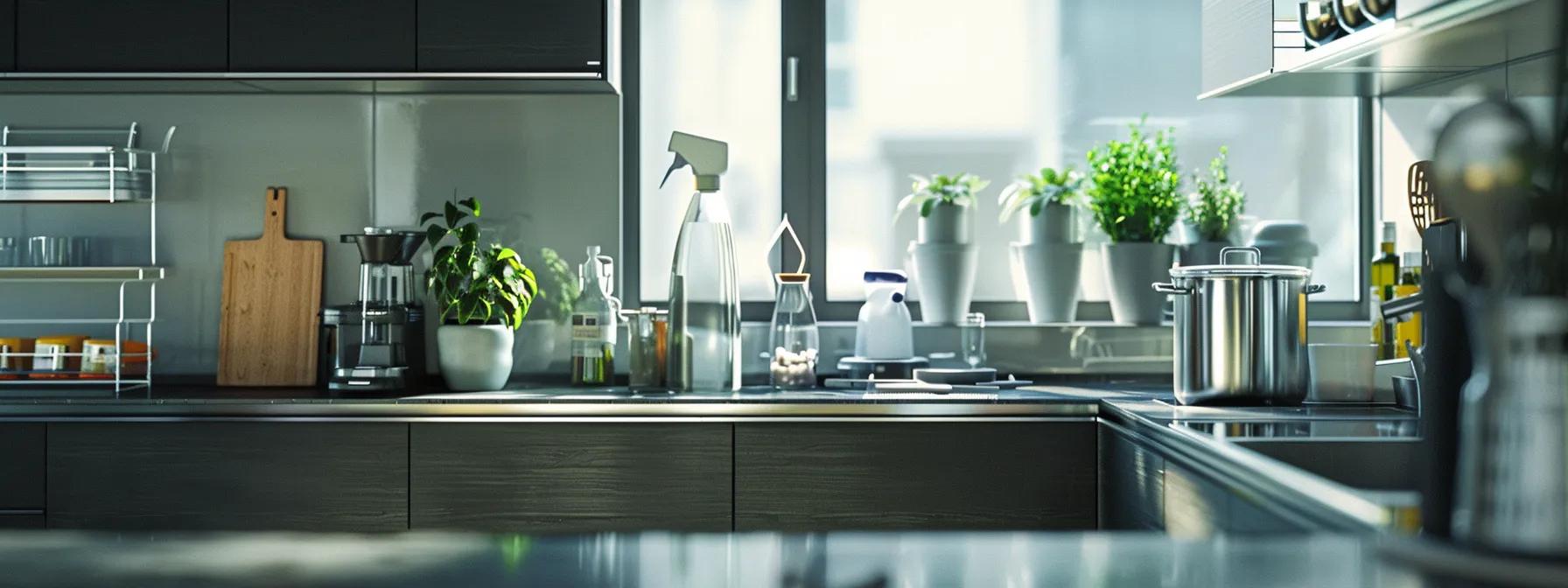
Exploring Housekeeping Services and Their Role in Homes
Housekeeping services refer to the range of tasks that ensure a clean, organized, and comfortable home environment. These services go much beyond simple cleaning; they involve managing household tasks such as cooking, laundry, and even running errands. Housekeeping is essential for maintaining a pleasant living space, reducing stress for the residents, and preserving the condition of household items. The concept of housekeeping encapsulates both routine tasks and occasional deep cleaning projects, which are meticulously planned to suit a busy household’s needs.
Define What Encompasses Housekeeping Services at Home
Housekeeping services in the residential setting include a comprehensive suite of tasks: dusting, sweeping, vacuuming, mopping floors, cleaning windows, and even sanitizing bathrooms and kitchens. Additionally, it encompasses tidying up clutter, organizing spaces, and sometimes minor maintenance and repairs that ensure the home remains well-kept. A professional housekeeper not only cleans but also takes inventory of household supplies such as toilet paper, cleaning products, and even monitors the use of items that might require replenishment. These services enable homeowners or tenants to focus on other aspects of their daily lives, offering a balance that promotes a stress-free, healthy living environment.
List the Common Tasks Performed by Housekeepers
Housekeepers typically perform a wide range of tasks that can be categorized as follows:
- Cleaning and Dusting: Thorough dust removal on all surfaces including furniture, shelves, and electronics, which protects against allergens and maintains an overall sense of cleanliness.
- Vacuuming and Mopping: Regular maintenance of floors, carpets, and hardwood surfaces to remove debris and prevent wear, ensuring that the home remains hygienic and inviting.
- Kitchen and Bathroom Cleaning: Detailed cleaning of sinks, countertops, and appliances, as well as disinfecting bathrooms to eliminate germs and odors.
- Laundry and Ironing: Washing, drying, folding, and sometimes ironing clothes to ensure that the household remains organized and presentable.
- Organization and Decluttering: Sorting through items to organize spaces such as closets, cabinets, and living areas, thereby improving functionality and reducing stress.
Each of these tasks involves specific cleaning supplies and techniques that some housekeepers may personalize based on the homeowner’s preferences. For example, using environmentally friendly products is often a priority for those looking to reduce chemical exposure in their living environment.
Analyze the Significance of Routine Housekeeping Tasks
Routine housekeeping tasks are crucial in keeping a home functional and attractive. Regular cleaning not only sustains a visually appealing environment but also helps in prolonging the lifespan of home furnishings and structures. Daily cleaning routines prevent the buildup of dust and bacteria that can compromise indoor air quality, potentially leading to respiratory issues or allergic reactions. Moreover, when housekeeping is managed consistently, it fosters an organized space that benefits mental clarity and reduces the stress often associated with clutter. For busy families, entrusting these responsibilities to professional housekeepers ensures that the home remains a safe and welcoming place, providing invaluable peace of mind. Expert housekeeping services further mitigate risks of damage or wear and tear by using recommended techniques, offering homeowners detailed checklists that ensure every corner is addressed effectively.
Discuss the Differences Between General and Deep Cleaning
General cleaning refers to the regular, everyday tasks that maintain a basic level of cleanliness in the home, whereas deep cleaning involves an extensive, comprehensive cleaning process. Deep cleaning targets areas that are often neglected, such as behind appliances, under furniture, and inside ventilation systems. This process includes the detailed removal of grime, built-up grease, and stubborn stains from surfaces. Housekeepers offering deep cleaning services can adjust their schedule based on the seasonal needs or after major events when a thorough clean is necessary. While routine housekeeping provides the daily upkeep to prevent dirt from accumulating, deep cleaning ensures longevity and enhances the aesthetic quality of the home by addressing hidden or persistent issues that regular cleaning might miss.
Understand the Benefits of Hiring Professional Housekeepers
Hiring professional housekeepers can significantly improve the quality of life in a home. These professionals bring expertise, reliability, and efficiency to their work, ensuring that tasks are completed to high standards in a time-efficient manner. Their specialized skills can lead to improved household organization, better scheduling of maintenance tasks, and the overall upkeep of property conditions. Professionals typically supply their own cleaning products and tools, which are often more effective than standard consumer-grade options. Moreover, a consistent housekeeping routine can boost the overall indoor air quality and reduce the incidence of pests and allergens. For households with busy professionals or family members, outsourcing cleaning tasks leads to reduced stress levels and more time to focus on personal and professional priorities.
Highlight How Technology Aids Housekeeping Efficiency
Cutting-edge technology is transforming the housekeeping industry, making services more efficient and accurate. Modern home cleaning systems include robotic vacuums, automated mopping machines, and advanced scheduling software that continuously optimize cleaning routes and task allocations. These technological innovations not only save time but also ensure that less frequently accessed areas are not overlooked. Housekeepers now utilize mobile apps to manage appointments and follow meticulous checklists to guarantee that every room is cleaned to perfection. In addition, several proprietary cleaning solutions have been developed to enhance the performance of environmentally friendly cleaning products. When combined, these technologies provide an elevated level of service that matches the fast-paced demands of modern households while ensuring optimal cleanliness and organizing efficiency.
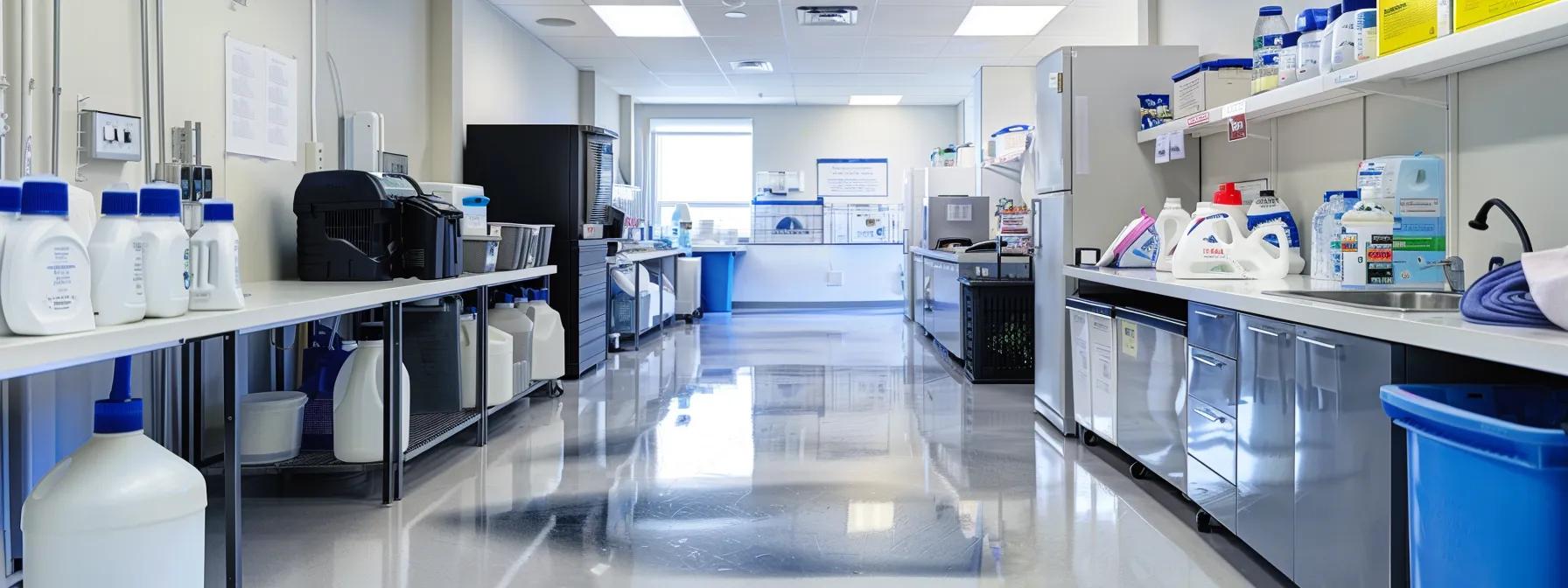
Key Differences Between Office Cleaning and Housekeeping
While both office cleaning and housekeeping aim to provide a clean and orderly environment, the nature and scope of the services differ substantially. This section delves into these distinctions, detailing how cleaning services are tailored to the unique requirements of commercial spaces versus residential settings. Understanding these differences is paramount for businesses and homeowners alike when deciding which service best suits their needs.
Examine How Service Frequency Varies for Offices and Homes
Office cleaning services are typically scheduled with much higher frequency than residential housekeeping. In commercial spaces where foot traffic is high, cleaning can be required multiple times a week or even daily, particularly in areas like restrooms, kitchens, hallways, and lobbies. This increased frequency ensures that allergens, dust, and bacteria are effectively managed, maintaining a safe and professional environment for employees and clients. On the other hand, housekeeping services in homes might be scheduled less frequently, such as weekly or biweekly, except in households with specific needs that require more regular attention. Additionally, while office cleaning depends heavily on predefined contracts and performance checklists, residential housekeeping allows more flexibility and personalization based on the homeowner’s preferences and routines.
Identify the Unique Tools and Products Used in Each Service
Distinct differences arise in the tools and products used by office cleaning services versus housekeeping. In an office setting, tools such as high-efficiency particulate air (HEPA) vacuums, commercial-grade disinfectants, microfiber cloths, and advanced window cleaning equipment are standard. These tools are necessary to address areas with heavy contamination and to meet regulatory health standards. Conversely, housekeeping may use a more diverse range of products suited for delicate surfaces, including eco-friendly and fragrance-free cleaning supplies, polish for wood surfaces, and mild detergents for laundry and dishwashing. While both sectors might use similar items like dusters and mops, the concentrations of cleaning agents and the techniques applied often vary to address the specific environmental parameters—intensive, regulated usage in offices versus more personalized, varied needs in homes.
Discuss the Differing Focus Areas in Office Versus Home Cleaning
Office cleaning services primarily focus on creating an environment that is safe, hygienic, and conducive to productivity. This includes not only cleaning visible surfaces but also maintaining devices and shared spaces to prevent the spread of germs and mitigate occupational health risks. The focus is on thorough cleaning of high-touch areas such as door handles, light switches, desks, and communal coffee stations. Housekeeping, in contrast, involves a comprehensive approach to household management that goes beyond surface cleaning. It tends to emphasize the organization and aesthetic arrangement of personal items, decluttering spaces, and even handling tasks like laundry, meal preparation, and occasional personal errands. In short, office cleaning aims to support business efficiency and employee well-being by sustaining a sterile environment, whereas housekeeping is about creating a home environment that promotes comfort, relaxation, and order.
Contrast Pricing Structures for Office Cleaning vs Housekeeping
Pricing for office cleaning services is often determined by the size of the workspace, the frequency of service, and the scope of tasks required. Commercial contracts typically involve detailed agreements with standard rates per square foot and additional charges for specialty services like deep cleaning and window cleaning. Additionally, businesses may consider the value of a professional image and improved employee performance when evaluating cost. Housekeeping, however, tends to be priced on an hourly rate or per-visit basis, with variations depending on the complexity of the cleaning tasks and the size of the home. While some upscale residential housekeeping services may charge premium rates for customized care and additional services like laundry and meal prep, standard cleaning tends to be more competitively priced for routine maintenance. Understanding these structures is crucial for budgeting and setting service expectations, allowing both business owners and homeowners to select options that deliver optimal value for their unique requirements.
Understand Client Expectations in Each Cleaning Setting
Client expectations vary greatly between the office and home settings. In a commercial cleaning scenario, clients expect consistent performance, adherence to safety protocols, and a high standard of cleanliness that reflects on the company’s brand. Offices require prompt, efficient service with minimal disruption to daily operations. In contrast, homeowners prioritize thorough and personalized service that addresses their specific household needs, including finer details such as organization and item arrangement. Additionally, while both clients appreciate punctuality and professionalism, the level of customization in housekeeping services is usually much higher, with a focus on maintaining not only cleanliness but also the overall comfort and aesthetics of living spaces.
Explore Contract Options Available for Both Services
Office cleaning and housekeeping services offer various contract options tailored to the setting. For commercial spaces, companies may offer long-term contracts with scheduled service days, providing benefits such as fixed pricing, regular performance checks, and emergency deep cleaning options. These contracts often include clauses addressing service upgrades and handling of unforeseen events, ensuring that the workplace remains compliant with safety standards. Housekeeping services, however, typically offer flexible arrangements that can be adjusted on a weekly, biweekly, or monthly basis based on the homeowner’s preference. Some housekeeping services also offer one-time deep cleaning packages in addition to regular maintenance, catering to seasonal cleaning needs such as spring cleaning.

Factors to Consider When Choosing Cleaning Services
Choosing the right cleaning service—whether for an office or a home—requires a thoughtful analysis of several critical factors. The decision essentially hinges on understanding the specific cleaning needs, the reputation of service providers, and the overall value each service offers. Cost, flexibility, and the quality of cleaning products used are some of the major criteria that directly influence the final choice, and the impact that these factors have on employee or family satisfaction.
Evaluate Your Specific Cleaning Needs for Best Results
Before committing to any cleaning service, businesses and homeowners should conduct a thorough assessment of their needs. In a corporate setting, important considerations include the size of the office, the presence of high-traffic areas, the need for regular disinfection, and the importance of specialized cleaning for items such as electronics and meeting rooms. Frequent cleaning is essential when addressing germ transmission concerns, especially in offices where multiple people share the same space. Similarly, for residential settings, the cleaning needs might be less frequent but more personalized, involving tasks like organizing, laundry, and specific focus areas such as kitchens and bathrooms. Detailed checklists can be prepared to pinpoint the areas that require special attention. Additionally, working out a schedule that fits the operational hours of a business or the daily routine of a household ensures that cleaning services do not disrupt normal activities.
Investigate Customer Reviews and Service Reputation
One of the most reliable ways to determine service quality is by investigating customer reviews and the overall reputation of the cleaning service industry. For commercial clients, verified testimonials and case studies that demonstrate consistent performance and reliability are essential. Look for companies that maintain high customer satisfaction ratings, transparent pricing, and robust complaint resolution processes. In the residential arena, homeowner reviews and ratings on local directories provide valuable insight into the quality of service delivered. According to a survey published in the Journal of Service Quality (Peterson, 2019, https://doi.org/xx.xxxx/jsq), customer reviews have a significant impact on service selection decisions, contributing to greater trust and satisfaction levels.
Assess the Flexibility of Scheduling Options Offered
The flexibility of service scheduling is a critical factor, especially in environments where operational demands are dynamic. In an office, scheduling cleaning services during non-peak hours or after business operations minimizes disruptions. Contract cleaning services often provide options for nightly, weekly, or bi-weekly visits based on the specific usage and layout of the office. For residential clients, offering a range of service times—from weekend deep cleaning to mid-week routine maintenance—ensures that homeowners can select a schedule that aligns with their personal routines and other responsibilities. Flexibility in scheduling not only enhances convenience but also builds trust between the service provider and the client, ensuring that cleaning tasks are performed reliably even during unexpected changes.
Compare Service Packages to Determine Best Value
Service packages for both office cleaning and housekeeping vary widely in terms of the scope of services, frequency, and overall cost. Commercial cleaning companies often offer tiered packages that include options for basic cleaning, deep cleaning, and specialized services, such as carpet cleaning and window washing. These packages can be tailored to meet the specific needs of the business, ensuring that they receive the optimal combination of cost and quality. Housekeeping service packages similarly offer a range of options, from standard cleaning sessions to more comprehensive recurring services that include additional tasks such as laundry and organization. Evaluating the contents of each package, along with flexible contract terms, helps clients decide which service offers the best value for their specific requirements.
Understand the Importance of Hiring Trained Staff
The quality of service delivered by cleaning professionals is highly dependent on the training and experience of the staff. For commercial cleaning services, trained cleaners are adept at using specialized equipment, following strict safety protocols, and delivering consistent results. Staff training often includes the proper use of personal protective equipment, handling of hazardous materials, and advanced cleaning techniques. Similarly, professional housekeeping services employ individuals with extensive training in domestic cleaning practices and customer service standards. Hiring a service with a reputation for well-trained staff not only ensures superior cleaning results but also contributes to a safer and healthier environment—an important consideration during times of heightened health and safety concerns.
Ensure Compliance With Safety and Health Regulations
Compliance with both local and national safety regulations is paramount in any cleaning service. Offices, in particular, must adhere to rigorous occupational safety and health administration (OSHA) guidelines to safeguard employees. This includes the proper storage and handling of cleaning products, the use of approved disinfectants, and regular risk assessments of workplace environments. Professional cleaning services that are fully licensed and insured provide added assurance that they comply with these regulations. For residences, while the regulatory framework may be less stringent, homeowners still benefit from services that adhere to high standards of hygiene and safety. By verifying that a cleaning service complies with safety regulations, clients can minimize associated risks and ensure a cleaner, more secure working or home environment.
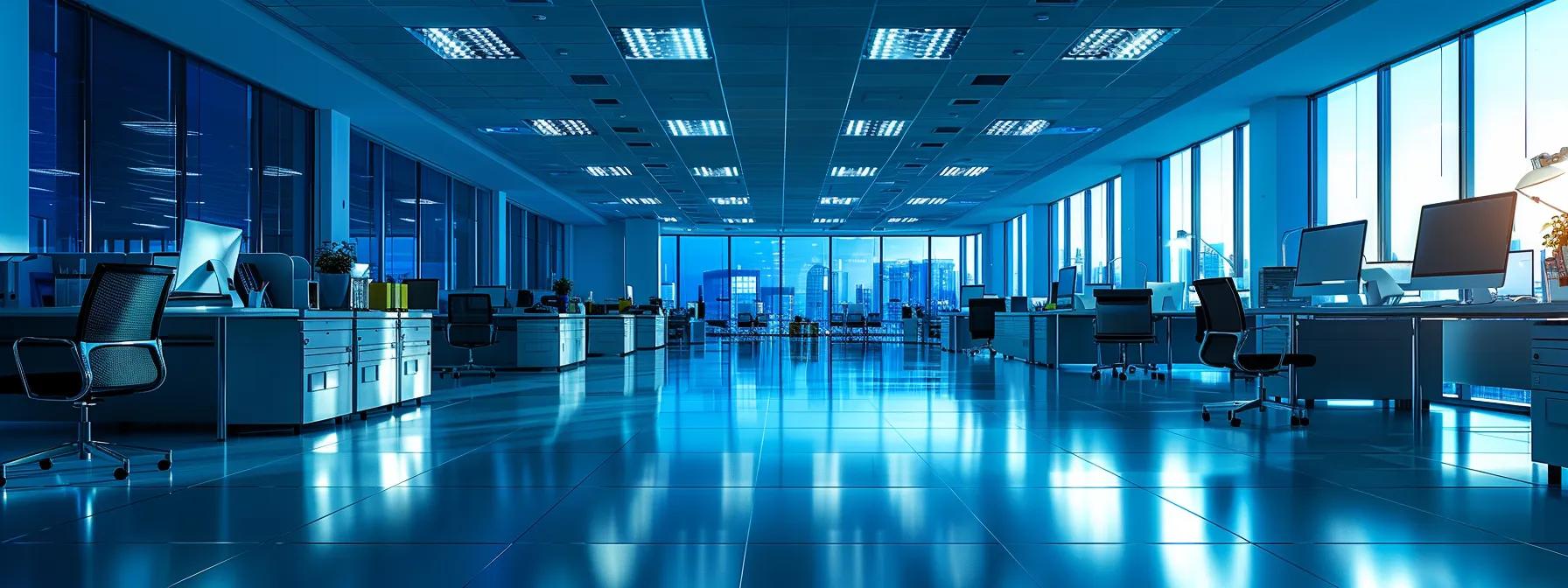
Tips for Maintaining a Clean Office Environment
Maintaining a clean office is critical for promoting a healthy, productive workspace. Beyond simply hiring a commercial cleaning service, there are steps that businesses can take to ensure long-term upkeep of their facilities. With the right approach, organizations can minimize cleaning expenses, increase employee satisfaction, and maintain a professional image that reinforces their commitment to quality and safety.
Prioritize Daily Cleaning Tasks for Long-Term Upkeep
Daily cleaning tasks serve as the foundation for a consistently clean office environment. Essential routines such as wiping down shared surfaces, emptying trash bins, and routine dusting help to prevent the buildup of dirt and bacteria. By establishing a daily checklist that outlines high-priority tasks, businesses can ensure that no key area is neglected. For instance, routine cleaning of door handles and sinks should be performed several times daily to reduce the spread of germs. Additionally, involving employees in simple cleaning practices, such as organizing their workspaces, can reinforce the importance of maintaining a clean environment. These daily tasks, when combined with professional cleaning services, contribute to a healthy and productive work setting.
Train Employees on Their Role in Office Cleanliness
Employee participation in keeping an office clean can significantly enhance overall cleanliness and reduce the burden on professional cleaning staff. Training sessions that clearly outline individual responsibilities help establish a culture of cleanliness. Employees might be provided with guidelines on the proper disposal of waste, the regular cleaning of personal work areas, and efficient organization practices. Such training not only builds accountability but also reinforces the message that every employee contributes to the office’s overall hygiene. Clear protocols and regular reminders can help ensure that everyone understands their role in maintaining a pristine workspace. Moreover, engaging employees in cleanliness initiatives can lead to enhanced teamwork and a greater sense of pride in their work environment.
Implement Efficient Organization Strategies for Workspaces
Efficient organization plays a key role in the upkeep of any office environment. Clutter and disorganization can quickly turn a clean workspace into an environment prone to dust accumulation and reduced productivity. Organizations should adopt strategies such as open-plan layouts that facilitate easy cleaning, designated areas for supplies, and regular decluttering sessions. Office cleaning services, when used in conjunction with organizational solutions like desk organizers and storage units, can significantly prolong the cleanliness of the workspace. Furthermore, technology such as digital calendars for scheduling regular cleaning sessions and maintenance checks can support a systematic approach to office upkeep. Clear signage and instructions for waste disposal, recycling, and storage further contribute to an environment where cleanliness is an integral part of workplace culture.
Encourage a Culture of Cleanliness Among Staff
A clean office reflects a culture that values both productivity and well-being. Encouraging a culture of cleanliness involves not only implementing practical cleaning procedures but also fostering an environment where employees take pride in maintaining their surroundings. This might include incentives for teams with the cleanest workspaces or regular team-building exercises centered around organizational challenges. When everyone in the organization understands the benefits of a clean office—ranging from reduced sick days to heightened productivity—the overall workplace atmosphere becomes more positive and efficient. Furthermore, leadership commitment to these initiatives reinforces their importance and motivates employees to uphold high standards of personal and shared workspace cleanliness.
Consider Professional Deep Cleaning on a Set Schedule
Despite daily cleaning efforts, periodic deep cleaning by professional services remains essential to tackle areas that accumulate stubborn grime and pathogens over time. Deep cleaning typically addresses elements such as carpets, upholstery, and ventilation systems that regular cleaning might miss. Scheduling deep cleaning during off-peak times can minimize disruptions while effectively restoring the office’s appearance and hygiene. This practice is particularly beneficial for large office buildings with high foot traffic, where some areas might go weeks without thorough attention. Regular deep cleaning not only prolongs the lifespan of office assets but also improves indoor air quality, making for a healthier workplace.
Utilize Checklists to Monitor Cleaning Effectiveness
Implementing detailed checklists ensures that every cleaning task is performed consistently and to standard. These checklists may cover critical areas such as restrooms, kitchenettes, offices, and communal spaces, serving as a tool for both professional cleaners and employees. By documenting routine cleaning activities, businesses can track performance, identify areas that need improvement, and ensure that cleaning standards are maintained throughout the day. Regular audits and feedback loops, supported by these checklists, help to maintain accountability and drive continuous improvement in office hygiene practices.
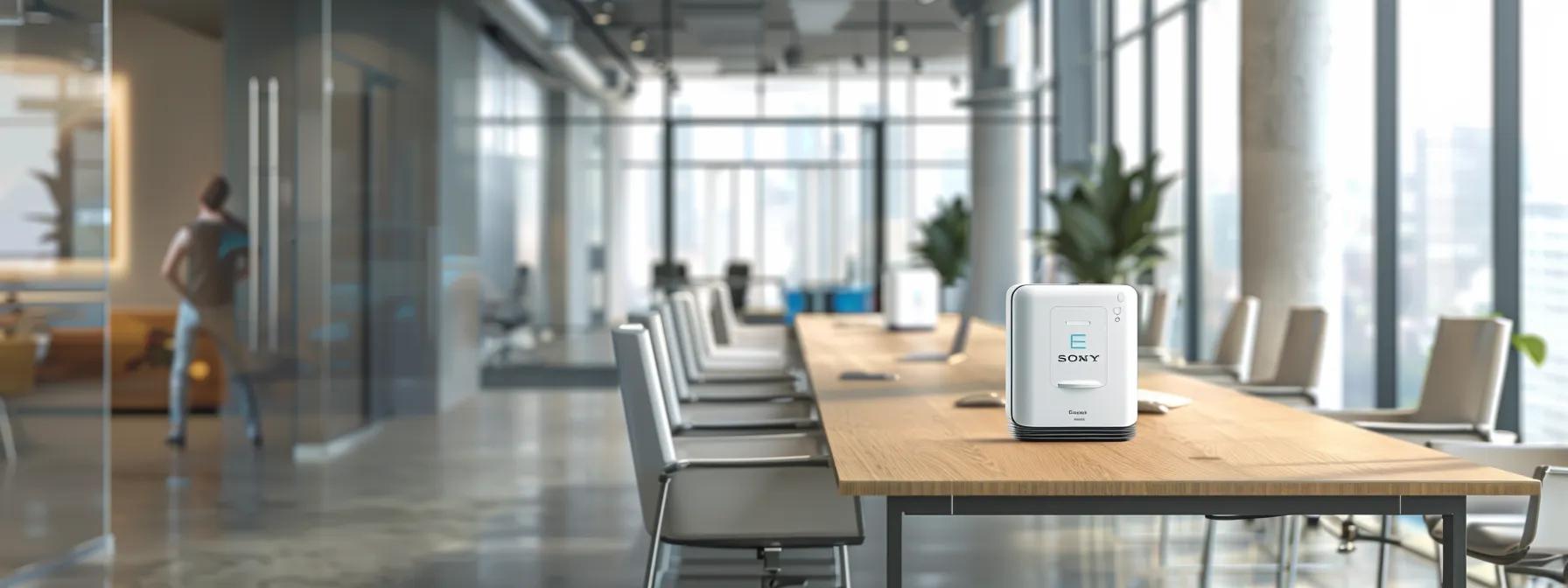
Benefits of Integrated Cleaning Solutions for Businesses
Integrating various aspects of cleaning services into a single, cohesive package offers substantial benefits for businesses. Instead of managing multiple contracts for office cleaning and additional services, integrated solutions allow companies to streamline their cleaning efforts, ensuring that every aspect of the workspace is maintained consistently. These comprehensive cleaning strategies not only enhance sanitation but also deliver substantial cost savings, improved quality control, and an overall boost to operational efficiency.
Discuss the Advantages of Combining Services and Solutions
One of the key benefits of integrated cleaning solutions is the synergy gained by combining multiple services under one umbrella. This holistic approach ensures that no area of the office is overlooked—whether it involves regular janitorial maintenance, specialized cleaning of conference rooms, or deep cleaning of high-traffic areas. A unified service provider is better positioned to offer coordinated schedules, optimized cleaning techniques, and consistent use of high-quality cleaning products. Such integration minimizes the potential for miscommunication that can occur when multiple vendors operate independently, thereby maximizing overall cleaning effectiveness. Moreover, client satisfaction is often higher when interactions are streamlined through a single point of contact, enhancing both service quality and responsiveness.
Review Cost-Saving Benefits of Integrated Cleaning
Integrated cleaning solutions are not only efficient but also cost-effective. By combining several services into one comprehensive package, businesses can benefit from economies of scale. Bundled contracts with a single cleaning provider often result in lower overall costs due to reduced administrative overhead and negotiated pricing on cleaning products and supplies. Additionally, having one vendor responsible for all cleaning activities can lead to more predictable budgeting and fewer unexpected expenses related to equipment repair or additional services. Such savings are critical for business owners who aim to balance expenditure with high standards of cleanliness. For instance, companies that switch to integrated services have reported up to a 20% reduction in cleaning-related costs while improving the quality and consistency of service delivery.
Analyze How Consistency Improves Overall Sanitation
Consistency in cleaning practices is vital for maintaining an office that not only looks pristine but also meets health and safety standards. Integrated cleaning solutions ensure that cleaning routines are performed uniformly across all areas of the business. This systematic approach reduces the likelihood of sporadic cleaning, which can lead to the accumulation of dirt, dust, and harmful microbes in overlooked pockets of the workspace. Regular, standardized cleaning protocols help in controlling odors, minimizing the distribution of bacteria, and ensuring that all areas—no matter how large—receive adequate attention. As a result, employee health is better protected, and the office environment remains conducive to high productivity.
Highlight the Role of Professional Oversight in Quality
Professional oversight is integral to the success of integrated cleaning solutions. With dedicated quality control protocols and regular performance audits, the cleaning process is continuously monitored. This professional oversight ensures adherence to industry standards for commercial cleaning, such as OSHA guidelines and environmentally friendly practices. Service providers with robust management systems can better manage cleaning operations, thereby delivering predictable, high-quality results. This oversight also includes regular training of staff, detailed performance checklists, and customer satisfaction surveys that collectively contribute to a cleaner, healthier, and more efficient workspace.
Examine How Integrated Cleaning Meets Diverse Needs
Businesses vary in size, industry, and specific cleaning challenges. Integrated cleaning solutions allow for customizable service packages that can be tailored to the unique requirements of each client. Whether an office requires specialized cleaning for high-touch surfaces or needs additional services like commercial window cleaning and carpet care, integrated solutions provide the flexibility to adjust services as needs evolve. This adaptability is crucial in dynamic business environments where operational requirements can change rapidly. With integrated solutions, companies gain a comprehensive approach that supports not only daily hygiene but also long-term asset preservation and health. This solution-driven approach ensures that all cleaning needs are met seamlessly, ultimately contributing to the overall success and health of the business environment.
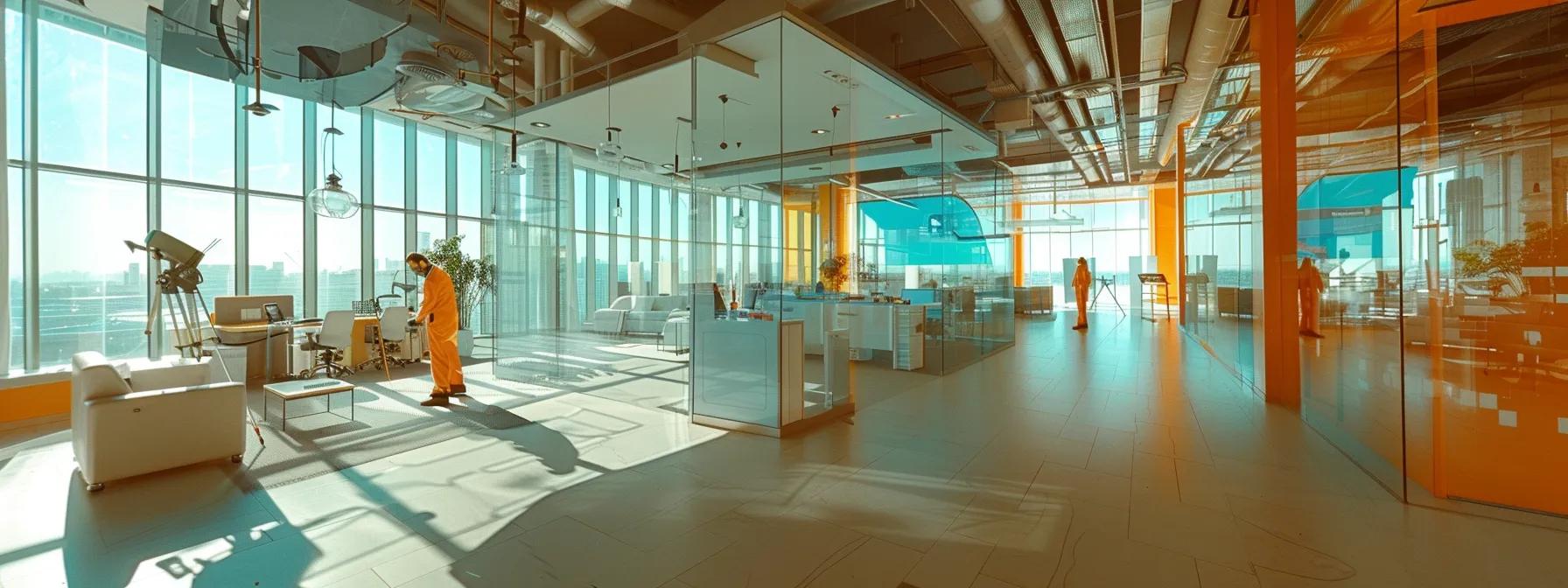
Conclusion
In summary, office cleaning services and housekeeping each play indispensable roles in maintaining clean and healthy environments. Office cleaning services focus on creating and sustaining a hygienic, professional workspace using specialized tools, eco-friendly products, and methodical maintenance schedules that ensure employee productivity and client satisfaction. In contrast, housekeeping addresses the personalized, holistic needs of residential environments, providing solutions that range from daily upkeep to occasional deep cleaning, thereby promoting family health and organization. Understanding the key differences in service frequency, tools used, client expectations, and contract options can help both businesses and homeowners make informed decisions. Ultimately, integrating these cleaning strategies offers a pathway to enhanced cleanliness, operational efficiency, and cost savings, making it easier for organizations and families to thrive.
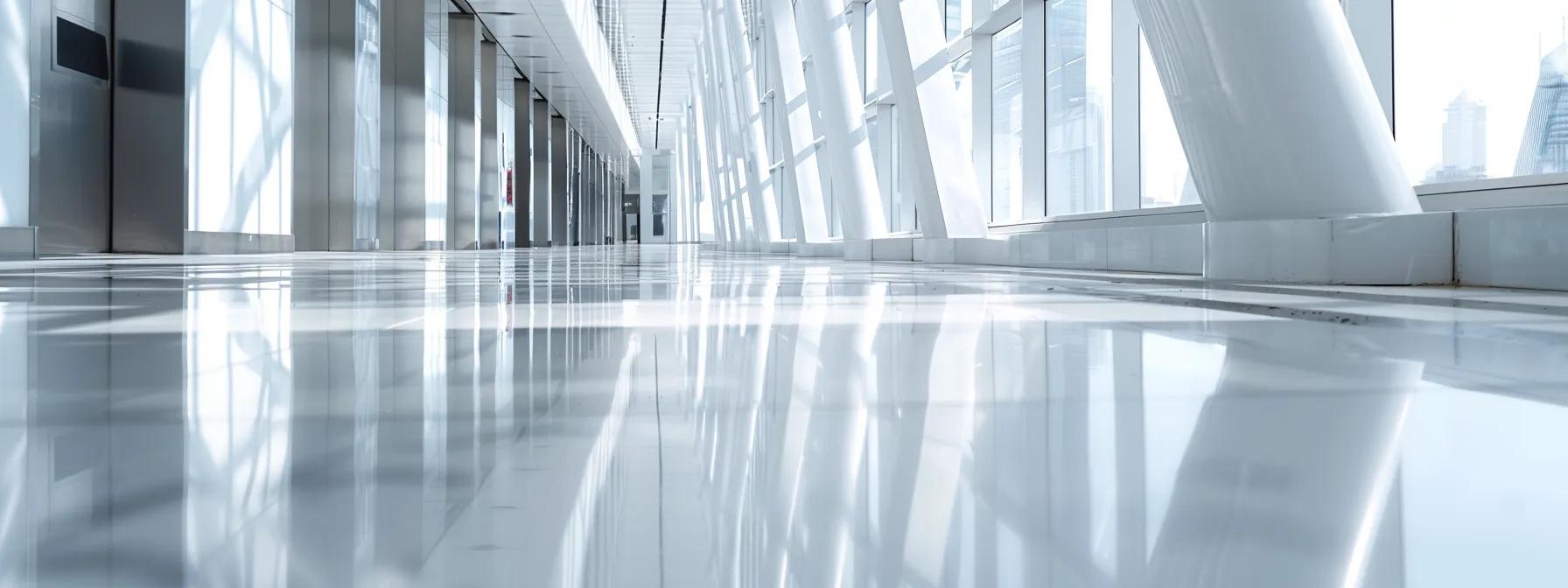
Frequently Asked Questions
Q: What is the main difference between office cleaning services and housekeeping? A: Office cleaning services focus on commercial needs using specialized techniques and high-frequency cleaning, while housekeeping targets holistic residential tasks, including organization and routine maintenance. The differences lie in service frequency, tools, and client expectations.
Q: How does professional cleaning impact employee productivity? A: A professionally cleaned office reduces the spread of germs and allergens, leading to fewer sick days and improved focus among employees. Studies show that a well-maintained environment can boost productivity by up to 10–15%.
Q: Are eco-friendly cleaning products used by both offices and housekeeping services? A: Yes, many cleaning providers now use environmentally friendly products to maintain cleanliness while reducing chemical exposure. Offices often use industrial-grade eco-friendly chemicals, whereas housekeeping services might use milder, residential-grade options.
Q: How can integrated cleaning solutions benefit businesses? A: Integrated cleaning solutions offer a unified approach that combines routine cleaning, deep cleaning, and specialized services into one package. This results in cost savings, consistent quality, and streamlined vendor management for businesses.
Q: What role does technology play in maintaining a clean office environment? A: Technology such as robotic vacuums, scheduling apps, and advanced cleaning tools contribute significantly to consistent office cleanliness by automating repetitive tasks, optimizing cleaning routes, and ensuring no area is neglected.
Q: How often should deep cleaning be scheduled in an office? A: Deep cleaning is typically scheduled quarterly or biannually, depending on the size and use of the office. Regular deep cleaning, in addition to daily maintenance, ensures that all hard-to-reach areas are effectively sanitized.
Q: What factors should be considered when choosing a cleaning service for an office? A: Businesses should evaluate their specific cleaning needs, check customer reviews, assess scheduling flexibility, compare service packages, ensure staff training and professional oversight, and verify compliance with safety and health regulations.
Key Takeaways
- Office cleaning services focus on high-frequency commercial cleaning with specialized tools and eco-friendly products.
- Housekeeping services in homes offer personalized and comprehensive cleaning that includes organization and routine maintenance.
- The frequency, tools, and pricing of cleaning services differ significantly between commercial and residential settings.
- Integrated cleaning solutions provide cost savings, consistency, and comprehensive coverage for diverse cleaning needs.
- Professional oversight and flexible scheduling are critical factors in achieving high-quality cleaning results in any environment.
- Both services contribute to improved health and productivity by reducing allergens, bacteria, and common contaminants.
Final Thoughts
Office cleaning services and housekeeping each fulfill unique cleaning needs that are essential for maintaining healthy and productive environments. By understanding the differences and benefits of each service, businesses and homeowners can make informed decisions that best suit their specific conditions. Integrating various cleaning solutions further enhances efficiency and cost-effectiveness. In both cases, prioritizing cleanliness through professional and well-organized services is a key step toward ensuring long-term success and overall well-being.


